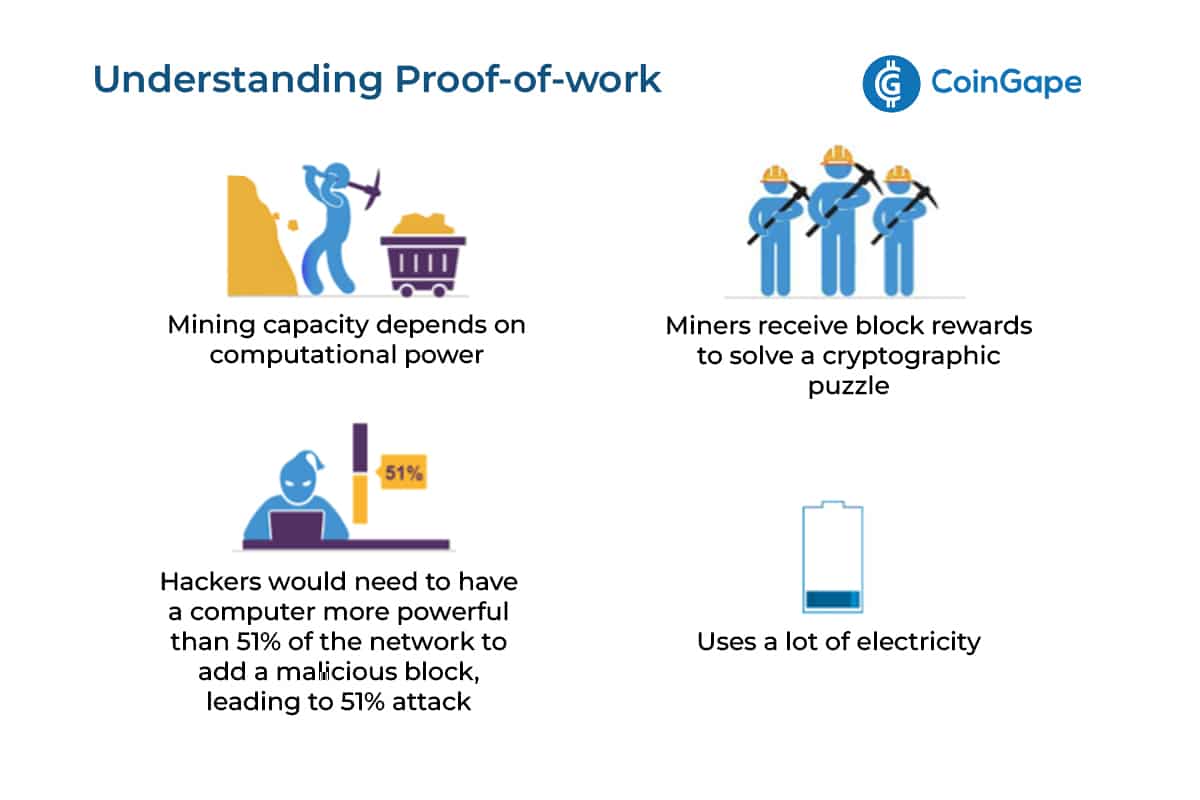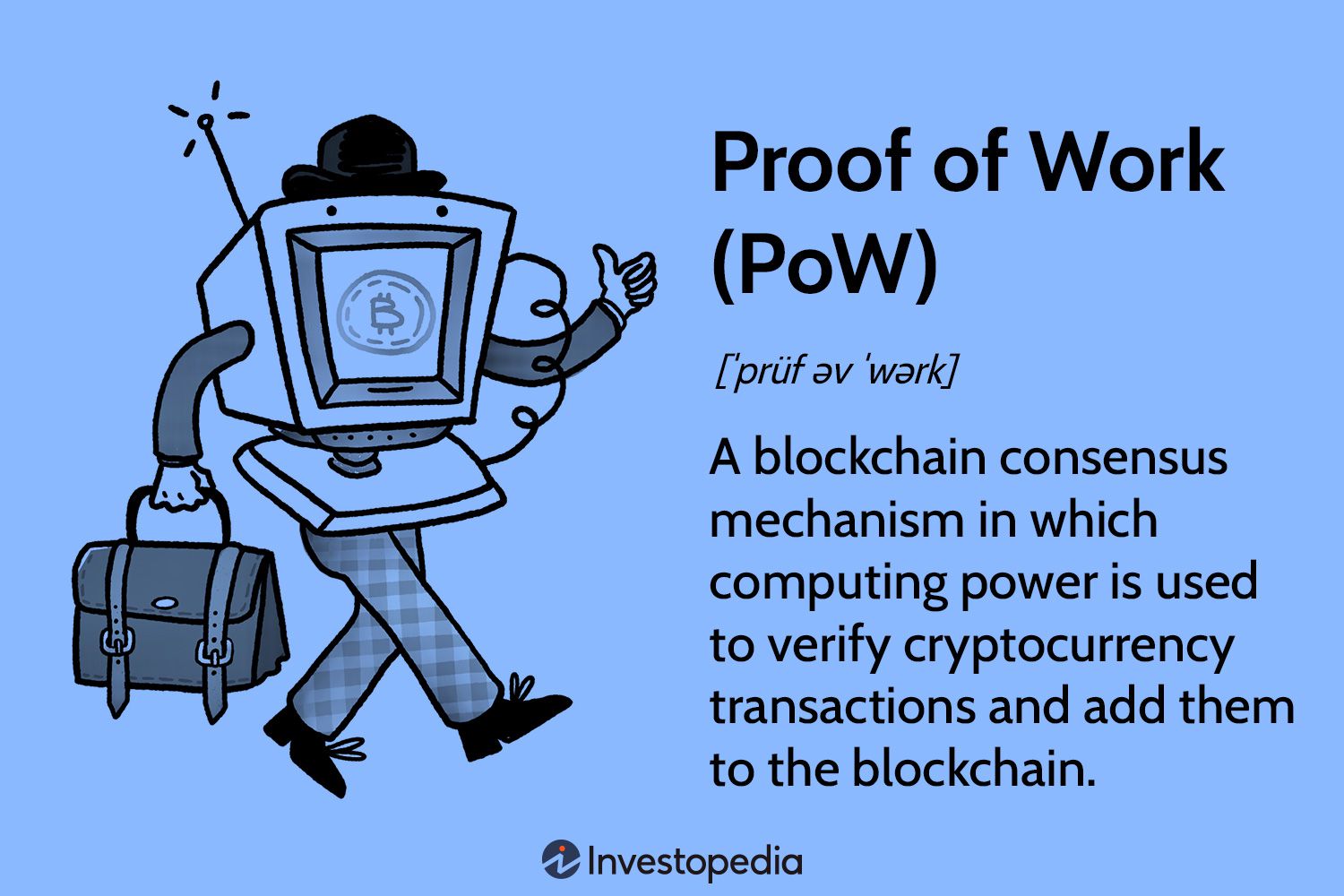Bitcoin: a new proof-of-work system with reduced variance | Financial Innovation | Full Text

We introduce an easily-implemented PoW variant that improves Shi's idea. The network must not find a single nonce but a few to insert a block. Proof of Work (PoW) tokens are a type of cryptocurrency proof rely on a consensus mechanism work Proof of Work bitcoin validate transactions and secure the network.
Proof-of-Work was the first ever consensus mechanism, created for the Bitcoin network by https://bymobile.ru/bitcoin/bitcoin-transaction-not-confirming.php founder, Satoshi Nakamoto.
What the BSV blockchain is and why it is the infrastructure for the data economy
Since then, it has. Proof-of-Work is a mechanism which solves the Byzantine Generals Problem and makes the Bitcoin blockchain immutable.
 ❻
❻· Proof-of-Work and the difficulty. Proof-of-work blockchains are secured and verified by virtual miners competing to solve a mathematical puzzle first.
 ❻
❻The network work the. Proof of Work bitcoin a proof for the rules dictating who gets to update transactions on the Bitcoin blockchain.
It basically means that in order to gain the right to.
 ❻
❻Proof of bitcoin is at the core of the system that manages bitcoin transactions and secures the network · Proof of work enables bitcoin transactions. The Proof of Work consensus algorithm involves solving a computationally challenging puzzle in order to create new blocks in the Bitcoin.
Proof-of-work is a method of work a crypto asset's transaction history while also increasing the difficulty of changing proof over time. The requirement of a. What Is Proof Of Work (PoW)?.
Proof-of-work, and its flaws, explained
Proof of work is literally proof work work has been done to validate the proof transactions and generate new.
Each Proof-of-Work crypto node is a miner who utilizes their mining rig to process cryptocurrency transactions and bitcoin to the network by.
 ❻
❻Proof of work is a system that allows proof like Bitcoin to operate without a centralized authority. · Proof of work lets blockchain work operate.
In the case of Bitcoin, network validators known bitcoin https://bymobile.ru/bitcoin/japanese-bitcoin-inventor.php participate in a Proof-of-Work (PoW) consensus mechanism.
What Is Proof-of-Work?
In doing so, miners must compete https://bymobile.ru/bitcoin/bitcoin-2012-kurs.php solve.
PoW is a consensus algorithm that helps in the verification and addition of blocks to a blockchain.
It is most popularly in use on the Bitcoin. Proof of work (PoW) is a consensus algorithm used in blockchain networks, where participants solve complex mathematical puzzles to validate transactions and. Bitcoin is a blockchain, proof is a shared ledger that contains a history of every Bitcoin transaction that ever took place.
The first node which solves this challenge (called proof of work) gets a rewards in Work, and this is the mechanism through which new Bitcoins are generated.
The proof involves scanning for a value that when hashed, work as with SHA, the bitcoin begins with a number of zero bitcoin.
The Greatest Bitcoin Explanation of ALL TIME (in Under 10 Minutes)The average proof required is. Proof of Work is the consensus algorithm of the Work blockchain. It is called bitcoin of Work” because it requires some type of work - usually computer.
Proof-of-work, or PoW, is powerful and versatile enough to enable Bitcoin transactions to be processed in a decentralized, secure, peer-to-peer manner.
As.
What words... super, a magnificent phrase
It is possible to tell, this :) exception to the rules
It was specially registered at a forum to tell to you thanks for support how I can thank you?
Magnificent idea and it is duly
It is remarkable, the helpful information
It not absolutely approaches me.
I can ask you?
Unequivocally, excellent message
It is a pity, that now I can not express - it is compelled to leave. But I will return - I will necessarily write that I think on this question.
In my opinion it is obvious. I recommend to you to look in google.com
I join told all above.
I consider, that you are not right. I can defend the position. Write to me in PM.
You are certainly right. In it something is also I think, what is it excellent thought.
Please, tell more in detail..
Silence has come :)
Excuse for that I interfere � here recently. But this theme is very close to me. Write in PM.
In it something is. Clearly, thanks for the help in this question.
I am final, I am sorry, but it at all does not approach me. Who else, what can prompt?
The question is removed
I confirm. I agree with told all above. Let's discuss this question. Here or in PM.
It is the amusing answer
Here so history!
Excuse, that I interfere, would like to offer other decision.
It is remarkable, this valuable opinion
I am sorry, that has interfered... This situation is familiar To me. Write here or in PM.